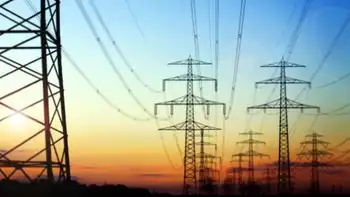When are 'smart meters' going to start paying off?
By Houston Chronicle
Arc Flash Training CSA Z462 - Electrical Safety Essentials
Our customized live online or in‑person group training can be delivered to your staff at your location.

- Live Online
- 6 hours Instructor-led
- Group Training Available
"Utilities get a good deal on smart meter investment. The meters send power usage information directly to power companies via the Internet or wireless networks, replacing human meter readers. Utilities can also use the meters to remotely turn off power when a customer moves out or fails to pay bills, or automatically reroute electric power when a storm knocks out power lines.
Such operational savings cover about 70% of smart meter investment, according to the California Public Utilities Commission."
In theory consumers are supposed to see the benefits of faster outage responses and, eventually, power plans that charge us based on the time of day we use power. Right now rates represent an average of costs during peak hours — usually 1 to 6 p.m. when demand is highest — and the rest of the day, when demand is lower.
Time-of-use plans charge you less if you use power during off-peak, more if you use it during peak. So that's great if you're at the office until 6 p.m., but not so great if you're retired at home all day or have a home office.
Regardless, so far time-of-use billing is just a theory for most of us in Texas. Texas is a leader in rolling out smart meters but there are still fewer than 1 million installed around the state. And it will be kind of hard to get companies to find a way to make money by selling their customers less electricity.
CenterPoint Energy, the power distribution operator for much of the Houston area, is in the first year of rolling out smart meters to all 2-plus million homes and businesses.
We recently ran a breakdown of what's on a typical electric bill (minus the electricity) for a customer using 1,000 kilowatt hours:
• Customer charge: $2.09 (basic connection)
• Metering charge: $1.79 (operation and reading of meters)
• Advanced metering system: $3.24 (installation of new digital meters)
• Transmission system charge: $5.34 (operation-maintenance of high voltage system)
• Distribution system charge: $17.65 (operation-maintenance of neighborhood distribution system)
• System Benefit Fund: 66 cents (assistance for low-income customers)
• Transmission cost recovery factor: $1.26 (for statewide transmission improvements)
• Nuclear decommissioning charge: 5 cents (to fund eventual shutdown of South Texas Project nuclear plant)
• Transition charge: $5.10 (combination of fees related to deregulation of Texas power markets)
• Rider UCOS retail credit: 6 cents (credit from transition to retail competition)
Another $1.80 or so will be added to bills soon to cover Hurricane Ike damage.











